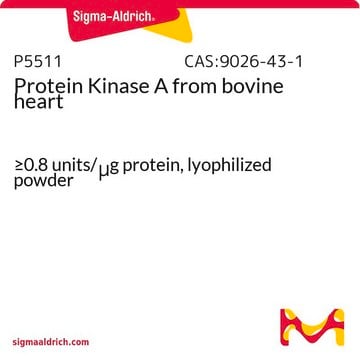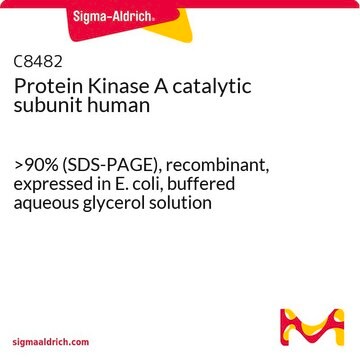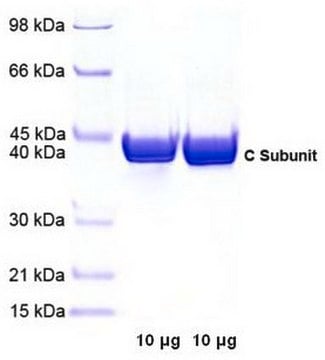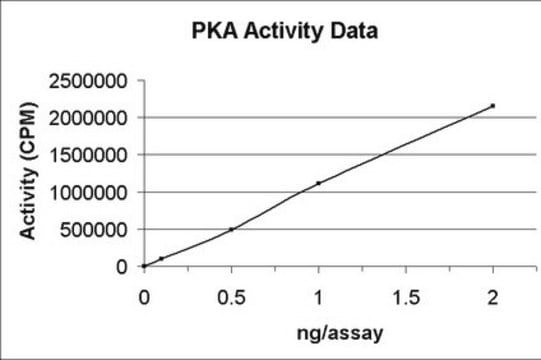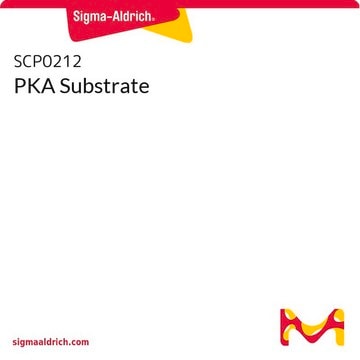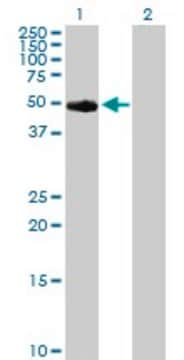P2645
Protein Kinase A Catalytic Subunit from bovine heart
≥9 units/μg protein (cyclic-AMP is not required for this activity), lyophilized (white powder to sticky mass to hard pellet)
Sinônimo(s):
PKA
About This Item
Produtos recomendados
Formulário
lyophilized (white powder to sticky mass to hard pellet)
Nível de qualidade
atividade específica
≥9 units/μg protein (cyclic-AMP is not required for this activity)
peso molecular
40,862 Da
temperatura de armazenamento
−20°C
Descrição geral
Aplicação
Ações bioquímicas/fisiológicas
Embalagem
Definição da unidade
forma física
Nota de preparo
Exoneração de responsabilidade
Inibidor
Código de classe de armazenamento
11 - Combustible Solids
Classe de risco de água (WGK)
WGK 3
Ponto de fulgor (°F)
Not applicable
Ponto de fulgor (°C)
Not applicable
Equipamento de proteção individual
Eyeshields, Gloves, type N95 (US)
Escolha uma das versões mais recentes:
Certificados de análise (COA)
Não está vendo a versão correta?
Se precisar de uma versão específica, você pode procurar um certificado específico pelo número do lote ou da remessa.
Já possui este produto?
Encontre a documentação dos produtos que você adquiriu recentemente na biblioteca de documentos.
Os clientes também visualizaram
Active Filters
Nossa equipe de cientistas tem experiência em todas as áreas de pesquisa, incluindo Life Sciences, ciência de materiais, síntese química, cromatografia, química analítica e muitas outras.
Entre em contato com a assistência técnica